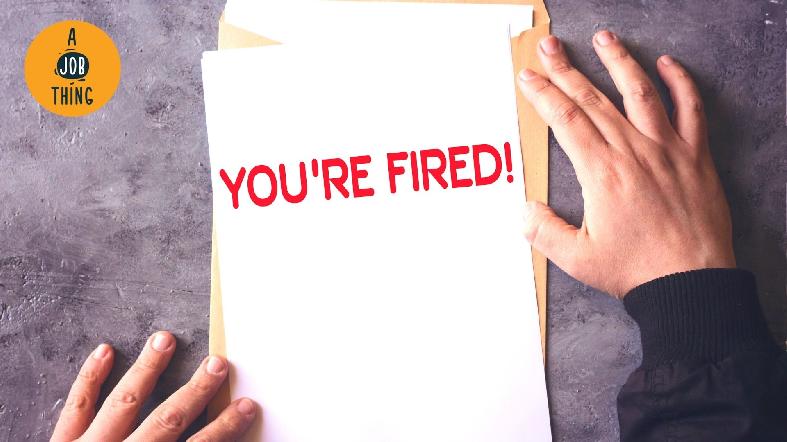
Hire Slow, Fire Fast: Does It Actually Work?
Are You Hiring?
Find candidates in 72 Hours with 5+ million talents in Maukerja Malaysia & Ricebowl using Job Ads.
Hire NowYou've probably heard of this line: "Hire slow, fire fast." There's a reason why startups worldwide adopted this mantra, but there are some doubts about it. How do you make sure you hire the right candidates and get them started ASAP?
Hiring slow and firing fast won't let you build a team of great talent. The world moves quickly; you either hire them fast or lose them. Before you give up on an employee, spend some time to see what went wrong and why they are underperforming.
Sometimes a quick dismissal is the best way. But you need to preemptively do a few things first to ensure you don't have to make that tough decision.
1. Never hire out of fear
Bad hires could cost companies a lot of ringgit. Not just that, a bad hire affects productivity and morale of your staff, and disengagement is an infectious disease. About 34 per cent of workers are happily committed to their jobs, and companies can suffer from loss if disengagement continues.
This is why companies afraid of making a hiring mistake and slowed down their hiring process. But if they slow down too much, they can lose out on high potential candidates.
2. Find the right candidate and hire them ASAP
Nowadays, organisations need to concentrate on hiring and keeping high-quality candidates, helping them compete with profitable margins. Update the job description and recruit through multiple channels if you don't want to miss out on top calibre candidates. You need to identify these three things:
- What skills you need,
- How to stand out from the crowd, and;
- Where to find your next candidates.
Keep in mind that when you're hiring, you're also selling. Understand what you need to offer as a company and showcase your company culture. Advertise the job opening to your target audience and meet them where they are. You can also set up an employee referral program as your employees know your culture and what kind of employee you're looking for.
Don't let fear affect your hiring decisions, or you will end up hiring the wrong candidate.

The recent pandemic does not make the recruiting process any easier.
3. Build a Talent Pipeline.
Before you open up a position, you should already have a few candidates in your mind. When you're recruiting, you build a pipeline of potential hires that you can access whenever there's a need for it. This way, you won't have to freak out whenever a position needs to be filled. When a job is open, you'll have a list of talent that has already been vetted by you.
Always keep an eye out for the next best candidate, be it through referrals, social media, or setting up a presence in the market. Establish your needs and wants and plan a hiring process. You can't just wing it.
Once a talent pipeline is built, you will need to nurture it. Contact your potential candidates and keep up with them from time to time. Interview them and let them experience your company culture. Your team should also meet and interact with them. The better the candidate experience, the more they want to work for you.
4. Find out the real issue.
If there's an employee that's begins to underperform, find out why. Sit down with them and ask questions such as:
- Is something going on?
- Do you not feel supported at work?
- Do you need extra training?
- Is there something wrong with the processes
Through communication, you can display compassion by discussing performance issues with your workers. But you also can find out the improvements your company needs to make.
For instance, maybe you're not offering enough training. If you fire them quickly without asking questions, you're not allowing your worker to fix themselves, and you're not setting yourself up to make and keep better talents in the future.
5. Lead your workers via coaching
Once you've found the problem, look for the answer through coaching. Communicate with your worker about their shortcomings. Explain how their performance does not match the job's expectations. Listen to them and understand where they stand. Your worker could have some problems of which you did not know.
Workers need to know what is expected of them. Explain the job expectations, and what will happen if they don't meet those expectations. If required, set up a development plan. List some achievable goals and praise the employee when they improve.
6. Don't make the process longer than it needs to be
In some situations, firing fast is the best way to go. If you have a worker who is verbally abusive, steals or lied on their qualifications, then obviously they should be fired. Other than these situations, it would be best if you took the time to work with your worker. If there's no improvement, don't drag out the process. The last thing you need is a bad hire affecting your whole team.
The mantra "Hire slow, fire fast" is a little too simplified for our current situation. Hire fast, fire faster is not the best move either. We need to change the way we think about hiring and retention to save our organisation a lot of time and resources.
Source: Teamable
What is AJobThing? Click to find out more about us!
Articles you might be interested in
HR Guide: Procedure and Templates for Leave Administration
What is Emergency Leave and How Does it Work in Malaysia?
Which Employees are Covered under the Employment Act?

